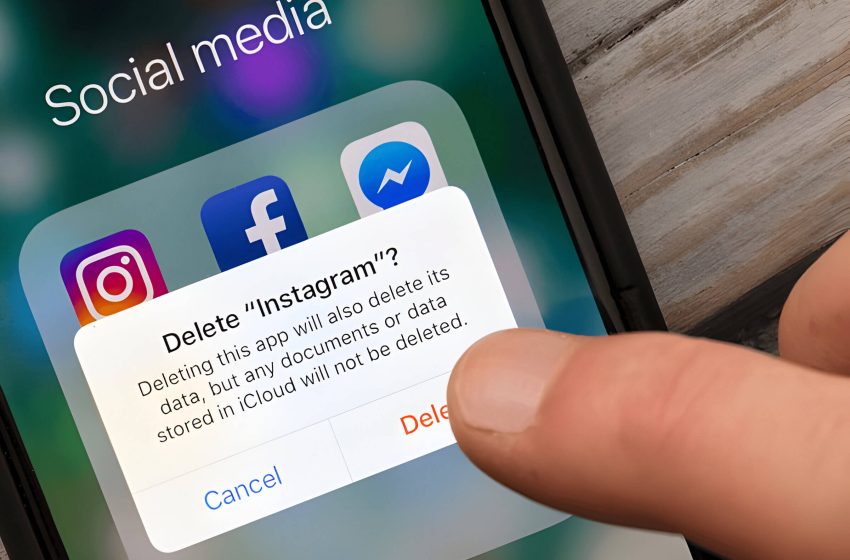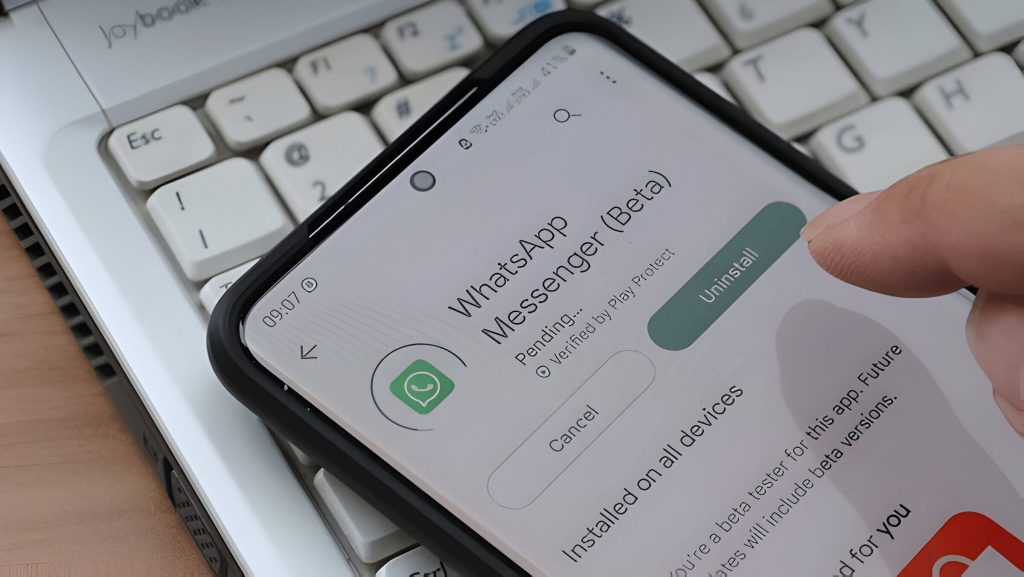How to Delete an App from Your Phone

Smartphones have become an integral part of our daily lives, but with countless apps at our fingertips, it’s easy for our devices to become cluttered and sluggish. This guide offers a comprehensive approach to deleting unnecessary apps from your phone, a crucial skill for maintaining device performance and storage efficiency. From understanding when to remove apps to troubleshooting common issues, you’ll learn how to streamline your smartphone experience and keep your device running smoothly.
Before You Begin, Backing Up Important Data
Before deleting an app from your phone, it’s crucial to consider whether you need to preserve any important data associated with it. Many apps store valuable information, such as personal notes, game progress, or important documents. To ensure you don’t lose this data, take the following precautions:
First, check if the app offers built-in backup options. Many apps allow you to export data or sync it with cloud storage services. Look for these features in the app’s settings or account management section.
If cloud backup isn’t available, consider manually exporting the data. Some apps offer options to share or export information via email or to your device’s local storage.
For apps that don’t provide direct backup methods, explore third-party backup solutions. These tools can often capture app data that might otherwise be lost during deletion.
Remember that some apps, particularly those linked to online accounts, may store data on remote servers. In such cases, your information should remain accessible even after deleting the app, provided you remember your login credentials.
By taking these steps to backup your app data before deletion, you can ensure that you retain access to important information while still freeing up space on your device.
Step-by-Step Guide
Step 1: Locating the App on Your Device
Before you can delete an app from your phone, you need to find it. There are several ways to locate an app on your device:
- Home Screen: Many frequently used apps are visible on your phone’s home screen. Swipe through the pages to see if the app you want to delete is there.
- App Drawer: On Android devices, you can access the app drawer by swiping up from the bottom of the home screen or tapping the app drawer icon. This displays all installed apps in alphabetical order.
- Search Function: Both Android and iOS devices have a search feature. On Android, swipe down on the home screen and use the search bar. On iOS, swipe right from the home screen to access the search function.
- Settings: You can also find a list of all installed apps in your phone’s settings. On Android, go to Settings > Apps & notifications. On iOS, navigate to Settings > General > iPhone Storage.
Once you’ve located the app using one of these methods, you’re ready to proceed with the deletion process. Remember, some pre-installed system apps cannot be deleted, only disabled.
Step 2: Initiating the Deletion Process
Once you’ve identified the app you want to remove, it’s time to begin the deletion process. The most common method is the long-press technique. Simply touch and hold the app icon on your home screen or app drawer until a menu appears. This menu typically includes options such as “Uninstall” or “Remove.”
If the long-press method doesn’t work, you can access the app info menu through your phone’s settings. Navigate to “Settings,” then “Apps & notifications,” and locate the app you wish to delete. Tap on the app name to open its info page, where you’ll find the “Uninstall” button.
For pre-installed apps that can’t be fully uninstalled, look for a “Disable” option instead. This will remove the app from your home screen and prevent it from running, though it will still occupy some storage space.
Remember, the exact steps may vary slightly depending on your device’s make and model, but the general process remains consistent across most smartphones.
Step 3: Confirming the App Deletion
Once you’ve initiated the app deletion process, your device will typically present a confirmation prompt. This crucial step ensures that you don’t accidentally remove an app you intended to keep. The confirmation message usually asks if you’re sure you want to uninstall the selected application.
Pay close attention to this prompt, as it often provides additional information about the consequences of app removal. For instance, it might warn you that deleting the app will also erase all associated data and settings. Some prompts may even remind you of the app’s storage size, helping you gauge how much space you’ll reclaim.
To proceed with the uninstall, you’ll need to confirm your decision by tapping “Uninstall,” “Delete,” or a similar affirmative option. If you’ve changed your mind, you can usually cancel the process by selecting “Cancel” or simply navigating away from the prompt.
Remember, this verification step is your last chance to reconsider before the app is permanently removed from your device. Once confirmed, the uninstallation process will begin, and you’ll typically see a progress indicator as the app is being deleted.
Alternative Methods for Deleting Apps

While the standard method of deleting apps by long-pressing their icons is widely known, there are several other effective ways to remove unwanted applications from your device. One such method is using the settings menu deletion process. Navigate to your phone’s settings, find the “Apps” or “Application Manager” section, select the app you wish to remove, and tap the “Uninstall” button.
Another approach is app store removal. Open your device’s app store (Google Play Store for Android or App Store for iOS), search for the app you want to delete, and select “Uninstall” or “Remove” from the app’s page. This method is particularly useful for managing apps you’ve previously downloaded but are not currently installed.
For Android users, third-party uninstaller apps offer an additional option. These tools can help you batch uninstall multiple apps simultaneously, remove pre-installed bloatware, and even suggest apps for deletion based on usage patterns. However, exercise caution when using third-party apps and ensure you download them from reputable sources.
By familiarizing yourself with these alternative methods for deleting apps, you can efficiently manage your device’s storage and maintain a clutter-free smartphone experience.
What to Do If You Can’t Delete an App?
When faced with the challenge of an app that refuses to be deleted, there are several steps you can take. First, ensure you’re not dealing with a pre-installed or system app, as these often can’t be removed without special permissions. For Android users, you might be able to “disable” these apps instead of deleting them, effectively hiding them from view and preventing them from running.
If it’s a regular app that’s causing trouble, try restarting your device and attempting the deletion process again. Sometimes, temporary glitches can prevent app removal. If that doesn’t work, check if the app has administrator privileges, which can block deletion. You’ll need to revoke these privileges in your device settings before trying to delete again.
For persistent issues, clearing the app’s cache and data might help. This can be done through your device’s application manager. If all else fails, consider using third-party uninstaller apps, but be cautious and only download from trusted sources.
As a last resort, tech-savvy Android users might consider rooting their device, which grants full control over the system, including the ability to remove stubborn apps. However, this process can void warranties and potentially compromise device security, so it should only be attempted by those who fully understand the risks and process involved.
After Deletion (Cleaning Up Residual Files)
After deleting an app from your phone, it’s essential to ensure that all associated files and data are completely removed. This process, often overlooked, is crucial for optimizing storage and maintaining device performance. Start by clearing the cache, which can be done through your phone’s settings menu. Next, check for any leftover data in your device’s file manager, paying special attention to folders that may bear the app’s name or related terms.
Some apps create hidden folders or leave behind configuration files that aren’t automatically removed during uninstallation. To address this, use a file explorer app to search for any remnants and manually delete them. It’s also wise to review your phone’s storage settings to identify any lingering data associated with the deleted app.
For a thorough cleanup, consider using specialized cleaner apps that can detect and remove residual files. However, exercise caution and only use reputable tools to avoid compromising your device’s security. By diligently removing all traces of deleted apps, you’ll not only free up valuable storage space but also potentially improve your phone’s overall performance and battery life.